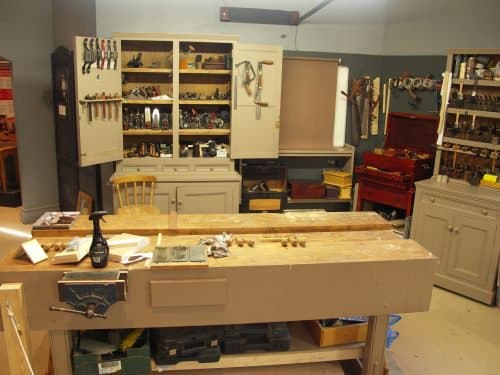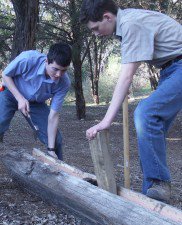My creative workspace #23

Man has never lived in a culture that so rapidly changes as we do today. These cultural shifts, slants and changes affect how we view life itself and through which eyes we view it. Shifts, slants and changes defy the permacutural types of old and instead of our crafts finding meaning in support of community and family life, we discover that meaning in craft is all but gone.
Reversing this reality seems almost impossible and yet there lies within every man and woman the desire and hope that crafts and hand work, cultivation of land and the preservation of food and the kitchen skills that enhance it for consumption and enjoyment will, when all is said and done, continue in the lived lives of people from every background. That’s why I live in hope that craftwork of high skill levels will continue to augment our living of life to defy the mendacity of this post-industrial cultural monotony. Though highly undervalued and underestimated in terms of true usefulness and indeed wellbeing, craft and craft work offers equilibrium in an imbalanced world governed hitherto for half a millennia solely by the fusion of economy with social status.
In defiance of socioeconomic spheres that once governed who made what and why, we modern-day new-genre artisans take the birthright of honest craftwork as our due inheritance. That’s why I find myself with accountants, doctors and software engineers, homemakers and auto mechanics, pilots and nurses choosing extracurricular activity working wood or metal or clay or leather with my hands. Who knows when crafts will return to their rightful place of belonging to men and women? Who knows when fully orbed spheres of creativity will bring sanity and wellbeing back to make contented those living with the sense of lostness. Life suddenly fills with purpose when handwork flows from the chisel’s edge and the potter’s hands, the blacksmith’s hammer.
My work will only cease when my last breath is spent in re-establishing real skill in the hands of my grandsons and daughters, my friends’ children and progeny yet to be of whom I know nothing. I find myself sustained in a cause to continue my quest to lead a quieter, sustainable life, working in my business using my own hands so as to provide for my family needs and the needs of others. It’s my sphere of creativity you see. A sphere within which I generate ideas, build prototypes, research what existed once for all, experiment to see if what was once said is still so and so much more.
As you pursue your handwork, eschewing the waste of material, of energy and the excesses of industrial wastefulness to establish the industrious qualities wrought by personal energy and skill, consider how you work at what. I have learned something over the past half century of working with my own hands. It’s a simple truth; Anyone can own skill if they are prepared work for it, invest time in practicing the art, and questioning its worth to them and others. I have spent the whole of my life working with wood and the blessing belongs not only to me but also those for whom I have worked, those whom I have trained and more. I have learned that it’s not enough just to merely work for a living but living to work seems more important. Work is in essence a form of honouring if you will. It’s not what you make that’s important so much as how you make it. It’s this that then determines the outcome and the end results speak not of the thing made but the maker of the thing. For it’s by this that those following will know the substance and character of who you were.


